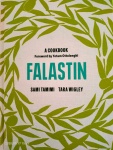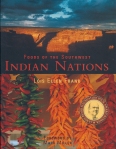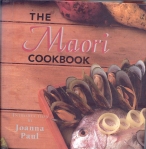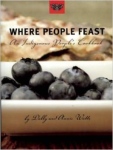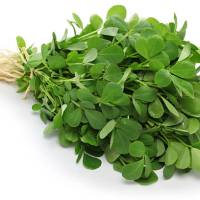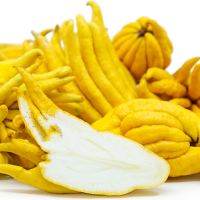I recently wrote a short piece about a Pavlova I had made. I didn’t spend any time on the ‘story’ of Pavlova and instead simply added a link, for those who were interested, to what I think is the definitive research on the origin of the Pavlova – no matter what New Zealand or Australia say. But in the process of looking at this research it occurred to me that there were lots of dishes that had history or stories attached to them. I am not talking about simply the lists of foods that are named after people or of foods and drinks that are named after places – all of these types of lists can be easily found and run into the hundreds. No, I am talking about the stories and history behind the naming of these foods and drinks, for instance, the story of how the modern dish called Pavlova became to be developed, what its antecedents were, who, which country, which time should we know about for the story.
So, today is part one of a simple account of a few very foods and the origins of their names. Drinks might be for another time, many dishes and foods will be omitted – certainly those meaty and fishy ones – and you will absolutely think there are many I have ‘missed’. I have – deliberately. These are just a few examples from a host of oh so many. And a small aside, I did not find Pavlova included in any of the pre-prepared lists that I looked at of dishes with ‘famous’ names. Enjoy.
Baked Alaska

Baked Alaska was originally called ‘Omelette Norwegge’ when conceived by the scientist Sir Benjamin Thompson in the 1750’s after he realised that the air bubbles in the meringue protected the ice cream. In a play on the contrasting temperatures, Charles Ranhofer, of Delmonicos in New York, renamed it ‘Alaska, Florida’ in 1867 after the US purchase of Alaska from Russia. This same Parisian chef later went on to give the dish its present name of ‘Baked Alaska’. (Recipe: Martha Stewart’s Vanilla-Raspberry Baked Alaska)
Biscuit

According to my friend, the Oxford Companion to Food, the name ‘biscuit’ is derived from the Latin panis biscotus, or bread cooked twice, and in appearance they were thin, flat and crisp. This cooking technique was used to increase shelf life, and especially when they were taken on long voyages – think, ship’s biscuits and foot soldiers (Italians produced panis biscotus comercially in the middle ages). But, you may say, what about Jamie Dodgers, what about Tea Biscuits, how to explain the differences in the huge variety of biscuits in the world today – that I have on good authority – have never been collectively listed. How did they come to be?
Well, are you sitting comfortably, then I’ll begin. Once upon … nope, sorry, wrong story. In fact, looking at the evidence, I think the topic of biscuits deserves a post all to themselves. So, coming soon, ‘Biscuits – the full, scandalous, unabridged, story!’. (Recipe: Eggless Chocolate Pistachio Biscotti from Archana’s Kitchen)
Crêpes Suzette

From the Readers Digest (so it must be true!): “In 1895, 14-year-old assistant chef Henri Charpentier at the Café de Paris in Monte Carlo was asked to prepare a dessert for the Prince of Wales—and future King of England, Edward VII. Charpentier’s nerves got the better of him, and the dessert accidentally caught fire; too afraid to keep his royal highness waiting, he tasted it to see if it was OK. The dish was not only acceptable but delicious. When Charpentier explained that he would call it Crepes Princesse, the prince asked that it instead be named in honor of his female companion, Suzette.”
However, there are least three other stories of the origin of this dish ranging from Charpentier’s aged account that it was based on one of his mothers dishes; to the identification of the ‘Suzette’ in question being Suzanna Reichenberg (1853–1924), who worked professionally under the name Suzette, as the Prince’s companion and so source of the name. Quite another story, also concerning Ms Reichenberg attributes the source of the dish’s name to the crepes she served on stage in her role as a maid in the Comédie Française in 1897. In the final origin story, crêpes Suzette were invented by the famous Auguste Escoffier, during his time at London’s Savoy Hotel, where – yes – he too served the Prince of Wales crêpes. The future king suggested naming the dish after, wait for it, Suzanne Reichenberg, whom he may well have seen in London in 1891 when she performed in L’ami Fritz and Les fourberies de Scapin. (Source: Quintessential Ruminations). Who knows! (Recipe: The Original Crêpes Suzette, from Rebecca Franklin at Spruce Eats, 22 August 2019)
Deviled Eggs

Deviling refers to making food spicy – often to mask ‘turning’ items and so avoid wasting food. Deviled Eggs can be traced back to ancient Rome, where eggs were boiled, seasoned with spicy sauces and then typically served at the beginning of a meal for wealthy patricians.
Eggs have also been a symbol of rebirth since ancient times, and it was Mesopotamian Christians who first adopted them as an Easter food. Dishes like deviled eggs and hardboiled eggs thus became associated with Easter. In the 13th century, stuffed eggs began to appear in the southern, Andalusian regions of Spain.
The term “deviled”, in reference to food, was in use in the 18th century, with the first known print reference appearing in 1786. In the 19th century, it came to be used most often with spicy or zesty food, including eggs prepared with mustard, pepper or other ingredients which filled the yolk cavity. (Recipe: Avocado Deviled Eggs, from Lisa Bryan at Downshiftology)
Doughnut

Records date doughnuts back to the mid-19th century, when the Dutch were making olykoeks or oily cakes, balls of cake fried in pork fat. Because the center of the cake would not cook as quickly as the outside, the pastries occasionally were stuffed with fruits or nuts, which required no cooking.
Another common story refers to Elizabeth Gregory, a New England ship captain’s mother, who prepared deep-fried dough for the boat crew to enjoy on long voyages. She stuffed the dough with hazelnuts or walnuts and referred to the treats as doughnuts. According to her son, Hanson Gregory, he invented the familiar ring shape in 1847, while aboard his ship. In an effort to eliminate the raw insides, he claims to have punched a hole through the center of the dough with the ship’s tin pepper box. The hole increased the doughnut’s exposure to the hot oil and therefore eliminated the uncooked center. In doing so, Gregory claims to have produced the first doughnut hole. (Recipe: Simple Homemade Doughnuts, from Marina at Let the Baking Begin)
French Fries

Frites were possibly made in Belgium as early as the 17th century. Wonderopolis tells us, “According to local Belgian lore, poor villagers living in Meuse Valley often ate small fried fish they caught in the river. During the winter months the river would freeze over — making fishing impossible and forcing the villagers to find other sources of food. The villagers turned to the root plant, slicing and frying it much in the same way they prepared the fish.” And so we have Frites.
American soldiers, in the first world war, learned about these Frites from French speaking Belgians and so, un-originally, we have French Fries rather than Belgian Fries.
Now, really – I am so not going to tell you how to make these. Have a very fine first week of the new year. Part two next week.


